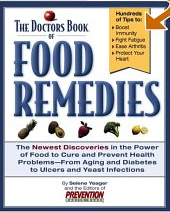Sick House Syndrome: Is your home making you sick?
Most people spend well over 90% of their time indoors. In which case, indoor air is going to impact our health far more than outdoor air. The EPA informs us that 6 out of 10 homes and buildings are "sick", meaning they are hazardous to your health to occupy as a result of airborne pollutants.
A baby crawling on the floor may inhale the equivalent of four cigarettes a day, and is exposed to a multitude of pollutants, as a result of the out-gassing of carpets, molds, mildews, fungi, dust mites, etc.
Diseases / Conditions Caused by Exposure to "Building Toxicities"
You may experience eye, nose, and throat irritation, stuffiness, "spaciness", skin rashes, headaches, nausea, and flu-like symptoms. Symptoms following exposure come and go fairly quickly -- you may notice them within an hour or two of entering a building but also notice that they will be gone within an hour or two of leaving a building.
Harmful indoor chemicals can lead to anemia, sinusitis, allergies, asthma, chronic fatigue, a generally weakened immune system, cancer, brain damage, and even death. Exposure to radon and tobacco exposure can lead to lung cancer.
Indoor Pollutants Reference Table
| Pollutant | Possible Side Effects | Source | Pollution Fighter |
|---|---|---|---|
| Airborne Particles | Respiratory problems, allergies | Carpets, Ducts | HEPA Air Filtration System, Frequent Airing, Removing Carpeting |
| Benzene | Carcinogen, skin and eye irritant, headaches, loss of appetite, drowsiness, tiredness | Inks, oils, paints, plastics, rubber, dyes, detergents, gasoline, tobacco smoke | English Ivy, Peace Lily, Chrysanthemum |
| Carbon Monoxide | Low: fatigue, chest pain High: impaired vision, headaches, dizziness, confusion, nausea, flu-like symptoms | Unvented heaters, leaking chimneys, furnaces, gas stoves, automobile exhaust | Proper ventilation, regular maintenance, carbon monoxide detectors |
| Formaldehyde | Irritated eyes, nose, throat, headaches, contact dermatitis | Room deodorizers, carpets, permanent press clothing, foam insulation, plywood, cigarette smoke | Boston Fern, Aloe Vera, Spider Plant |
| Radon Gas | Cancer-causing radioactive gas. Leading cause of lung cancer among non-smokers (20,000 deaths annually) | Soil/rock with uranium/radium traces. Enters through foundation cracks, drains, joints | Professional testing and mitigation, foundation repairs |
**If you are sensitive to pollen, avoid chrysanthemum and daisy arrangements as they are ragweed relatives.

Environmental Hazards Contributing to "Sick Building Syndromes" & How To Eliminate Them
We tend to spend most of our lives in tightly sealed indoor environments. If fresh air can't enter the house, it gets filled with internal pollutants, such as harmful fumes caused by paints, cleaning products, deodorizers and wood smoke.
Newly introduced harmful chemicals, especially in carpet, can easily be detected by the odor they give off. They smell "new." Open up a cupboard door and smell. If it smells "funny," formaldehyde may be present. If you see discolored walls, it may be mold.
🦠 Eliminate Mold / Mildew
Water-damaged materials and lack of ventilation frequently results in the growth of molds and other organisms that can cause allergies and other illnesses.
- Fix leaks and moisture problems
- In rooms such as kitchens and bathrooms where humidity is high, proper ventilation is essential
- Run the bathroom vent fan when showering to discourage mold growth
- Clean the humidifier and air conditioning drain pans
- Keep gutters clean to avoid moisture from penetrating
- Stengler Medical Mystery: Molt-induced Sick House Syndrome
🤧 Reduce Allergens
- Keep pets out of the bedroom, wrap your mattresses and pillows in allergy-proof covers
- Use a HEPA filtration system to clean the air
- Introduce fresh air into the home several times a day
- Eliminate dust mites by washing bedding in hot water. Natural latex mattresses are naturally resilient to dust mites
⚠️ Asbestos Safety
If your home was built between 1920 and 1978, you may be exposed to asbestos, which can cause lung cancer and mesothelioma.
- If you have household materials made with asbestos, inspect them
- Only specially trained and licensed contractors should remove asbestos
- For more information, call the Consumer Product Safety Commission at (800) 638-CPSC
🎨 Lead Safety
Lead can be found in paint, water and various household items. Lead exposure can cause severe anemia, permanent brain damage and other problems.
- If you live in a house built before 1978, have an inspector check it
- Consider covering over paint with wallpaper, paneling or non-toxic paint
- Don't dry-vacuum lead dust -- use an HEPA vacuum cleaner
- For more information, call the National Lead Information Center at (800) 424-LEAD
Water Lead: Click here for tips to find out and reduce lead exposure from your tap water.
💨 Carbon Monoxide Prevention
At low concentrations may cause fatigue and chest pain. In higher concentrations, can be fatal.
- Keep gas appliances properly adjusted
- Use vented space heaters
- Install and use an exhaust fan vented to outdoors over gas stoves
- Have a trained professional inspect heating systems annually
- Install a carbon monoxide monitor
☢️ Radon Testing & Mitigation
Radon is a radioactive gas that can increase the risk of lung cancer. It's odorless and invisible.
- Radon tests are not expensive. Call the National Radon Hotline at (800) SOS-RADON
- If high levels are found, hire a state-certified or EPA-certified contractor to fix the problem
- Repair cracks in basement/foundation
💧 Water Quality
You can check the water quality in your area by calling the EPA's Drinking Water Hotline at (800) 246-4791.
- Install Water Filtration Systems and shower filters
- Test private wells yearly for nitrates and bacteria
- Check for lead in drinking water